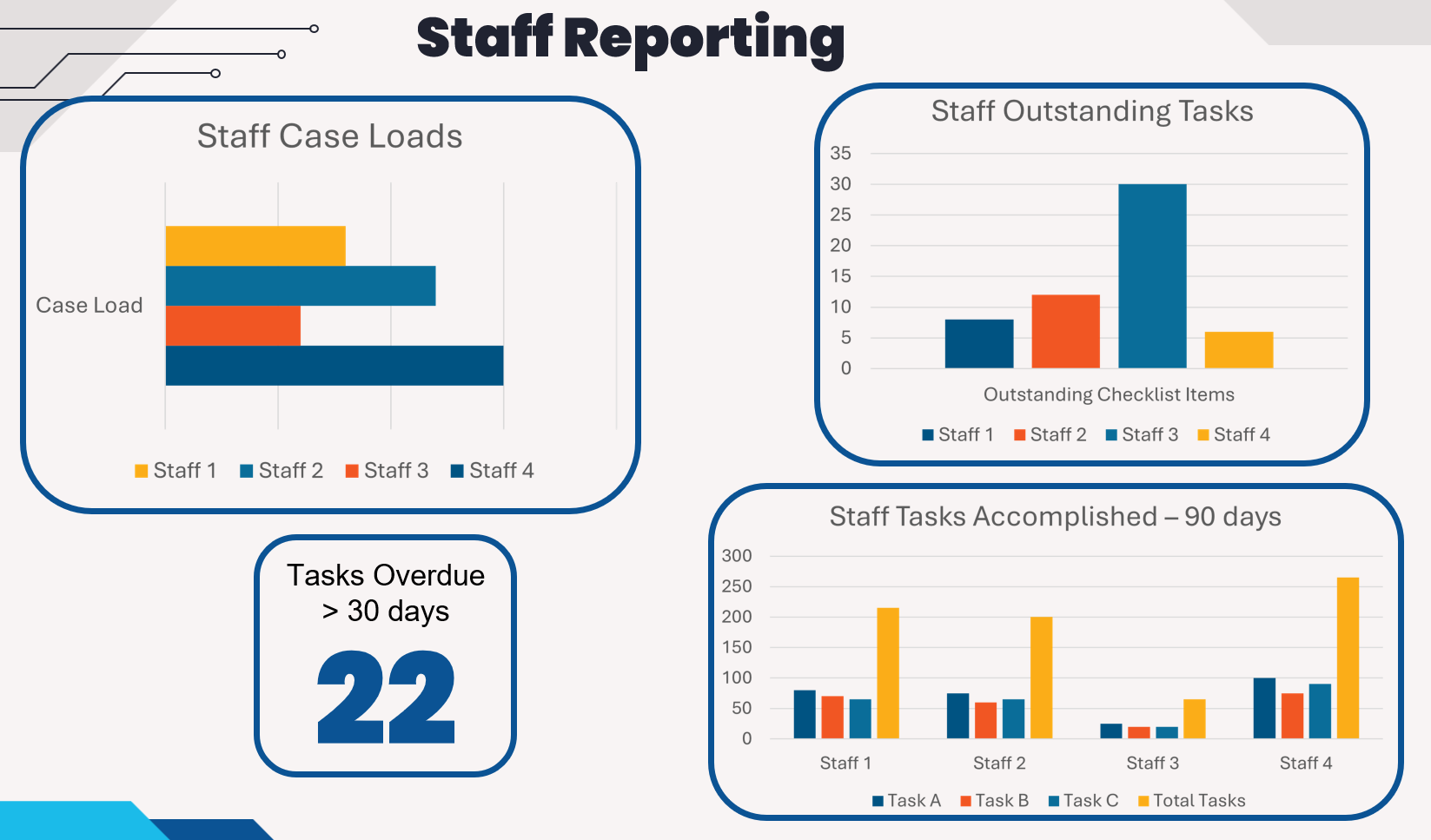
Legal AI, Legal Tech
Legal TechMay 08, 2025
If your law firm isn’t tracking performance metrics, you’re flying blind. From client intake to settlement resolution, every touchpoint holds valuable data—and the most successful firms use it to drive smarter decisions, increase profitability, and deliver a better client experience.
Tracking the right metrics can unlock powerful insights into your law firm’s performance—but only if your data is accurate, consistent, and actionable. Before you start measuring outcomes like case cycle time or revenue per case, it’s critical to lay the groundwork by ensuring your data is clean.
Bad data—whether from inconsistent naming, skipped fields, etc.—can lead to misleading reports and costly decisions. In this post, we’ll walk you through how to avoid bad data, identify the metrics that truly matter, and explain why each one plays a vital role in helping your firm grow more efficiently and profitably.
Bad data is a common challenge virtually all organizations encounter at some point. Inaccurate or incomplete data leads to misleading reports, poor decisions, and wasted time.
Bad data is actually worse than no data at all. You may think you're tracking cycle time or conversion rates accurately—but if your intake process is missing key info or your case closure dates aren’t logged properly, your metrics are skewed, which could lead to misguided conclusions.

Once you have the protocols in place to avoid creating bad data in the first place you are well positioned to identify what data you want to track. Spoiler: it may be less data than you think!
Not all data is created equal; just because something is measurable doesn’t mean it’s meaningful. Firms often get overwhelmed trying to track everything and lose sight of the metrics that actually move the needle.
Here’s how to focus on data that drives real value:
Your KPIs should align with what your firm is trying to achieve. Want faster case resolution? Focus on cycle time and bottleneck phases. Looking to grow revenue? Track settlement values, referral ROI, and revenue per case.
A good metric prompts a decision. For example:
· “Time spent on discovery” can reveal process inefficiencies you can fix.
· “Client communication frequency” might lead you to automate follow-ups.
If a number doesn’t influence a choice or behavior, it’s probably just noise.
If a number doesn’t influence a choice or behavior, it’s probably just noise.
Looking at a single report once won’t tell you much. Valuable data is tracked over time so you can spot patterns—are cycle times improving? Are referral sources shifting?
Make it a habit to review your most important metrics monthly or quarterly and act on what you see.
Your firm likely handles multiple case types or practice areas. Segmenting your data (e.g., by case type, staff member, referral source) reveals more meaningful insights than broad averages alone.
Just because a number is big doesn’t mean it matters. For instance, a large number of open cases might look impressive—but if they’re all stalled, that’s not a win. Focus on metrics that correlate with outcomes, not appearances.
Focus on metrics that correlate with outcomes, not appearances.
Now you know why data integrity and choosing what metrics to track is critical; let’s move onto the metrics every law firm should track, starting with intake.
Client intake conversion rate is the percentage of potential leads who become actual clients.
This metric shows how effectively your firm turns inquiries into signed cases. Tracking conversion rates helps you spot breakdowns in the intake process—whether it’s a slow response time, unclear communication, or lack of follow-up.
Case cycle time is the average time it takes to resolve a case from intake to closure.
Understanding your case cycle time helps assess operational efficiency. If cases are dragging, it may signal workflow bottlenecks or resource misallocation. Shortening cycle time improves cash flow, capacity, and client satisfaction.
This is the average value of settlements, segmented by practice area.
This metric helps you determine which case types are delivering the highest return. It’s essential for evaluating ROI on your marketing and staffing strategy—and where to focus your firm’s resources for growth.
Referral source ROI is return on investment for each referral source (e.g., other attorneys, digital ads, partners).
Not all leads are equal. Measuring which sources bring in your most valuable clients allows you to focus your marketing spend where it counts and eliminate underperforming channels.
Capturing the total hours logged for each major phase of a case—intake, discovery, negotiation, etc. is a must.
This breakdown reveals where your team’s time is going and helps pinpoint inefficiencies. For example, if discovery consistently takes too long, you may need to revisit your processes or staffing.
This metric tracks the amount of time staff spend on billable vs. non-billable tasks.
This metric gives insight into workload balance and operational efficiency. High-performing firms use it to optimize staffing, set realistic performance targets, and prevent burnout.

This metric enables a view of how long cases have been open and how much value is tied up in unresolved cases.
Tracking aging cases helps identify delayed resolutions and prioritize cases that impact your bottom line. It’s also a key tool for forecasting cash flow and managing attorney workloads.
This is a record of how often and how well your team communicates with clients.
Timely and clear communication builds trust. Tracking communication frequency helps ensure no client feels neglected—and can prevent complaints or poor reviews down the line.
NPS is a common, yet simple measure of how likely clients are to recommend your firm, often gathered through surveys.
High satisfaction leads to more referrals. Measuring NPS or client sentiment allows you to identify service issues early and turn happy clients into advocates.
This metric tracks the average amount of revenue generated by each case or practice area.
This metric helps evaluate profitability across different types of work. Use it to guide where to invest, which practice areas to expand, and how to price your services competitively.
This metric helps evaluate profitability across different types of work. Use it to guide where to invest, which practice areas to expand, and how to price your services competitively.
Tracking all these metrics doesn’t have to be overwhelming—especially with the right tools. Neos, Assembly Software’s cloud-based case management platform, makes it easy to measure what matters. With real-time dashboards, automated reporting, and AI-powered insights, Neos helps law firms turn raw data into meaningful action.
Metrics aren’t just numbers—they’re strategic assets. Start with a few, build discipline around tracking them consistently, and use the data to continuously improve.
Want more? Content for this post was taken from Bryan Billig’s webinar, “Key Metrics for Law Firms to Track,” at Legal Up. Watch the full webinar replay for real-world examples and deeper insights into how these metrics can transform your practice.
SHARE
